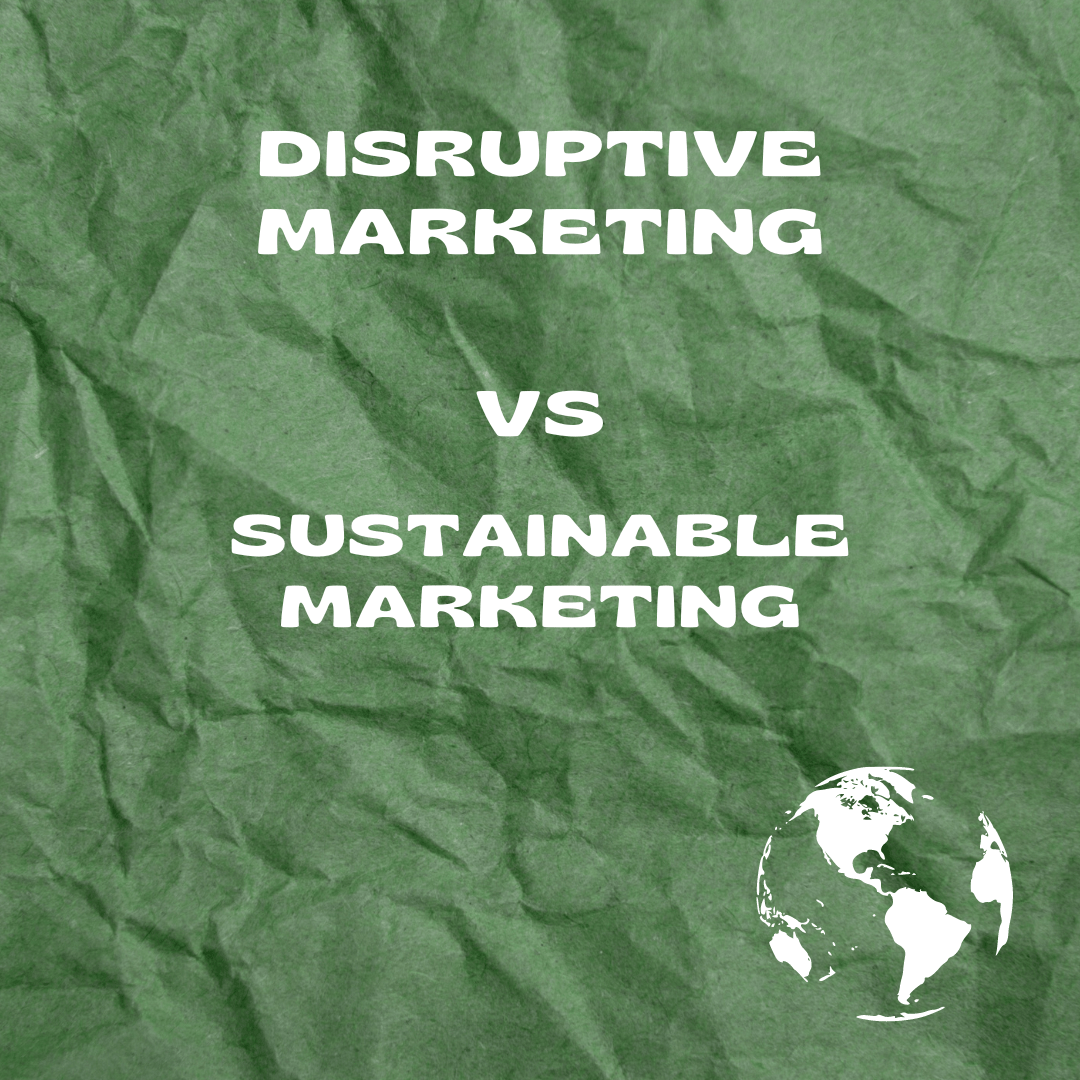Is Disruptive Marketing the Go-To Solution in 2024?
In the dynamic world of marketing, trends come and go, but some strategies make a lasting impact. Disruptive marketing has been a buzzword for years, but is it still the go-to solution in 2024? As the world becomes more conscious of its environmental and social footprint, the question arises: can sustainable marketing offer a better alternative? Let’s explore the current landscape and future possibilities.

Understanding Disruptive Marketing
Definition and Examples
Disruptive marketing involves breaking the mold to capture attention in unconventional ways. Think of Apple’s groundbreaking “Think Different” campaign or Dollar Shave Club’s viral video that shook up the shaving industry. These campaigns grab attention by defying expectations and pushing boundaries.
Benefits and Drawbacks
The primary benefit of disruptive marketing is its ability to generate buzz and capture market share quickly. However, it can be risky. A campaign that misses the mark can alienate customers and damage a brand’s reputation. Additionally, the shock value of disruptive marketing often has a short lifespan, requiring constant innovation to stay relevant.
The Current Landscape of Marketing in 2024
Trends and Innovations
Marketing in 2024 is shaped by technology and data-driven strategies. AI and machine learning are used to personalize experiences, while augmented reality (AR) and virtual reality (VR) create immersive brand interactions. Sustainability is no longer a niche concern but a major driver of consumer choices.
Consumer Expectations
Today’s consumers are savvy and socially conscious. They expect brands to be transparent, ethical, and environmentally responsible. Marketing strategies that don’t align with these values are increasingly seen as outdated or out of touch.
Evaluating Disruptive Marketing in 2024
Success Stories
Despite its challenges, disruptive marketing continues to produce success stories. Brands like Tesla have used bold, unconventional strategies to redefine industries and create loyal customer bases. The ability to innovate and surprise remains valuable.
Challenges Faced
However, the effectiveness of disruptive marketing is waning in some sectors. As consumers become more discerning, the shock-and-awe tactics can feel gimmicky or insincere. Moreover, the rapid pace of change means that what was disruptive yesterday can become the norm today.
The Case for Sustainable Marketing
Definition and Principles
Sustainable marketing focuses on promoting products and services in a way that is ethical, environmentally friendly, and socially responsible. It’s about building long-term relationships with customers based on trust and shared values.
Advantages Over Disruptive Marketing
Sustainable marketing offers several advantages over disruptive tactics. It aligns with growing consumer demand for ethical business practices and can build deeper, more meaningful customer relationships. Additionally, it supports long-term brand loyalty and reduces the risk of backlash from poorly received campaigns.
Key Components of Sustainable Marketing
Ethical Advertising
This involves being truthful and transparent in all marketing communications. It means avoiding misleading claims and respecting consumer privacy.
Environmental Responsibility
Brands must consider the environmental impact of their products and marketing practices. This includes using sustainable materials, reducing waste, and promoting eco-friendly products.
Social Impact
Companies should contribute positively to society, whether through fair labor practices, community engagement, or philanthropy. This creates a positive brand image and fosters customer loyalty.
Implementing Sustainable Marketing Strategies
Steps for Businesses
Assess Current Practices:
Conduct a thorough review of your current marketing strategies to identify areas for improvement.Set Clear Goals:
Define what sustainability means for your brand and set measurable goals.Engage Stakeholders:
Involve employees, customers, and partners in your sustainability initiatives.Communicate Transparently:
Share your sustainability efforts and progress with your audience.
Examples of Successful Implementation
Patagonia is a prime example of a brand that has successfully integrated sustainability into its marketing. Their commitment to environmental causes resonates deeply with their customer base, driving loyalty and sales. Similarly, Unilever’s Sustainable Living Plan has helped the company grow while reducing its environmental footprint.
Challenges in Adopting Sustainable Marketing
Overcoming Resistance to Change
Shifting to sustainable marketing can face resistance, particularly if it requires significant changes in business practices. It’s essential to communicate the long-term benefits and engage all stakeholders in the transition.
Measuring Impact and ROI
One of the challenges of sustainable marketing is measuring its impact. Traditional metrics may not fully capture the value of sustainability efforts. Developing new ways to measure ROI, such as customer loyalty and brand reputation, is crucial.
Future Outlook: Sustainable Marketing in 2024 and Beyond
Predictions and Trends
As we move further into 2024, sustainable marketing is poised to become the norm rather than the exception. Brands that fail to adopt sustainable practices may find themselves at a competitive disadvantage. Innovations in green technology and increased consumer awareness will drive this trend.
Long-term Benefits
The long-term benefits of sustainable marketing are clear. Brands that prioritize sustainability are likely to enjoy increased customer loyalty, enhanced brand reputation, and potentially lower operational costs through more efficient practices.
Conclusion
While disruptive marketing has its place, the shift towards sustainability in 2024 is undeniable. Sustainable marketing not only meets the evolving expectations of consumers but also offers long-term benefits for brands willing to embrace it. As the world becomes more conscious of its impact, sustainable marketing is not just an option but a necessity for future success.
FAQs
1. What is disruptive marketing?
Disruptive marketing involves innovative and unconventional strategies to capture attention and stand out in the market. It often defies traditional marketing norms to create buzz.
2. Why is sustainable marketing important?
Sustainable marketing is important because it aligns with growing consumer demand for ethical and environmentally responsible business practices. It helps build trust and long-term relationships with customers.
3. Can disruptive marketing and sustainable marketing coexist?
Yes, they can coexist. A balanced approach that incorporates the innovation of disruptive marketing with the principles of sustainability can create compelling and responsible campaigns.
4. What are some examples of successful sustainable marketing?
Brands like Patagonia and Unilever have successfully implemented sustainable marketing strategies. Patagonia’s commitment to environmental causes and Unilever’s Sustainable Living Plan have resonated with consumers and driven business growth.
5. How can businesses measure the success of sustainable marketing?
Businesses can measure the success of sustainable marketing through metrics such as customer loyalty, brand reputation, and the overall impact on the environment and society. Traditional ROI metrics may need to be supplemented with new indicators that capture the value of sustainability efforts.
